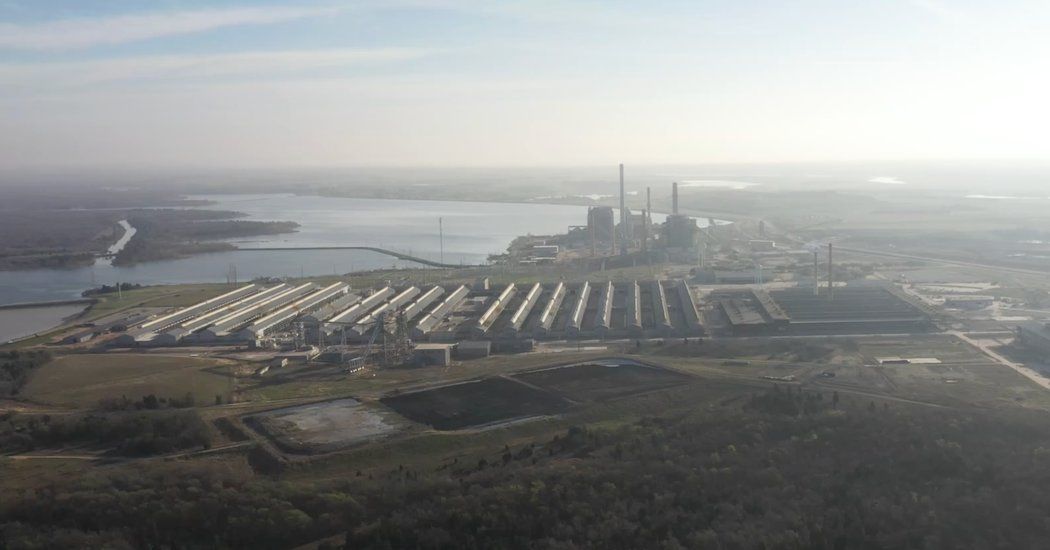

Monday, The New York Times published a long expected piece about Bitcoin mining.
It’s about as bad as you would expect it to be. For fun though, let’s examine and debunk the three worst claims in the article:
The authors use preferential use of “Marginal Emissions Analysis.”
Collected in early March, the report surveyed the generation fuels for 34 Bitcoin mines based on public data. Fossil fuels made up greater than 70% of energy generation for every site, with dozens of sites with fuel mixes of 90% fossil fuels. For example, the survey states Riot Blockchain’s Rockdale, Texas facility–which pulls directly from the grid at an interconnect–is apparently powered almost exclusively by fossil fuels.
As professor Troy Cross points out, however, marginal emissions analysis ascribes new demand sources to the marginal generation source–not a good way to measure these baseloads.
Attributional accounting takes the total emissions from a system and assigns proportions of it to participants in that system.
— Troy Cross (@thetrocro) March 11, 2023
Marginal accounting tries to determine how marginal additions to load change the emissions in a system over what it would have been without that load.
While marginal emissions analysis is not bad in and of itself, it can be misleading versus other tools depending on the situation. In this case, an attribution emissions analysis–which matches demand to supply of an energy grid together–would have been preferable, or perhaps another tool.
Bitcoin mines place “immense pressure” on energy grids.
Prefaced by an unrelated story about Winter Storm Uri–the deadliest winter storm in Texas history–The Times claims that Bitcoin mines place large pressure on local energy grids.
The Times supports this claim through price increase estimates for Texans, up 5% or $1.8 billion per year, according to research performed by Wood Mackenzie. The Times also includes a sample of electrical costs across buyers, saying:
“After accounting for the savings and revenue from each of the strategies, Riot told investors its electricity cost in 2022 was 2.96 cents per kilowatt-hour. By comparison, the average price for other industrial businesses in Texas was 7.2 cents. For residents, it was 13.5 cents.”
It’s unclear how Bitcoin mining itself increases the cost of electrical generation, particularly when the experts agree there are larger issues on the Texas grid than the single digit percentage of Bitcoin mining demand. Indeed, the Energy Reliability Council of Texas (ERCOT) fall report stated that Bitcoin mining makes up only 1.7 GW of ‘large flexible load’ on the Texas grid, compared to the 67-87 GW of total generation forecasted. Experts often focus more on transmission line loss and poor home insulation over certain high demand industries as culprits for price increases.
Bitcoin mining does not bring meaningful employment.
Unfortunately, employment claims about Bitcoin mining are generally misleading in both directions.
Here, The Times conducts a wonderful drive by shooting, claiming without evidence that “Bitcoin mines bring significantly fewer jobs, often employing only a few dozen people once construction is complete, and spur less local economic development.”
Compared to what? Other energy intensive industries? The context can’t be found in the piece, nor the gentle refrain that many technology based jobs now require fewer workers on the specific task, but more workers on the proximity. For example, a Bitcoin mine typically needs about two technicians per megawatt, but needs dozens of other employees in logistics, repair, maintenance, strategy, energy, etc.
Regardless of where you fall on the Bitcoin mining and climate debate, one thing is quite certain and stark given the pieces production and reception: Bitcoin mining will become more contentious. Money and energy are often politicised–Bitcoin mining is both. Get ready to get reactionary!
P.S. check out this amazing rebuttal video from the Riot Platforms team.
Bitcoin mining has zero carbon emissions. pic.twitter.com/dOO4wZpSW6
— Riot Platforms, Inc. (@RiotPlatforms) April 10, 2023
Image: The New York Times
